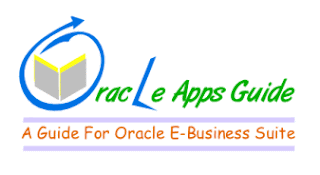ERP is the short form of Enterprise Resource Planning. ERP utilizes ERP software applications to advance the performance of organizations' resource planning, management control and operational control. ERP software is multi-module appliance software that integrates activities across functional departments, from product planning, parts purchasing, inventory control, product circulation, to order tracking. ERP software may include application modules for the finance, accounting and human resources aspects of a business.
ERP Definition – A Systems Perspective
ERP, frequently like other IT and commerce concepts, are defined in many different ways.
*Hardware and Operating Systems - Many huge ERP systems are UNIX based. Windows NT and Linux are other popular operating systems to run ERP software.
This is very common in the retail sector, where even a mid-sized retailer will have a discrete Point-of-Sale (POS) product and financials application, then a series of specialized applications to handle business requirements such as warehouse management, staff roistering, merchandising and logistics.
Ideally, ERP delivers a single database that contains all data for the software modules, which would include:
Manufacturing
Engineering, Bills of Material, Scheduling, Capacity, Workflow Management, Quality Control, Cost Management, Manufacturing Process, Manufacturing Projects, Manufacturing Flow.
Supply Chain Management
Inventory, Order Entry, Purchasing, Product Configurator, Supply Chain Planning, Supplier Scheduling, Inspection of goods, Claim Processing, Commission Calculation.
Financials
General Ledger, Cash Management, Accounts Payable, Accounts Receivable, Fixed Assets.
Projects
Costing, Billing, Time and Expense, Activity Management.
Human Resources
Human Resources, Payroll, Training, Time & Attendance, Benefits.
Customer Relationship Management
Sales and Marketing, Commissions, Service, Customer Contact and Call Center
and various Self-Service interfaces for Customers, Suppliers, and Employees .ERP Definition – A Systems Perspective
ERP, frequently like other IT and commerce concepts, are defined in many different ways.
A sound definition should contain several purposes:
* It gives answer to the question of "what is ... ?".
* It provides a foundation for defining more detailed concepts in the field - ERP software
* It provides a foundation for defining more detailed concepts in the field - ERP software
ERP systems, ERP realization etc.
* It provides a common ground for comparison with related concepts - CRM, SCM etc.
* It helps to answer the essential questions In the field - benefits of ERP, the causes of
* It provides a common ground for comparison with related concepts - CRM, SCM etc.
* It helps to answer the essential questions In the field - benefits of ERP, the causes of
ERP failure etc.
A definition of ERP based on Systems Theory can server those purposes. ERP is a system which has its aim, components, and borders.
The Aim of an ERP System - The aim of ERP is to advance and modernize inner business processes, which characteristically requires reengineering of current business processes.
The Components of an ERP System - The components of an ERP system are the common components of a Management InformationSystem (MIS).
*ERP Software - Module based ERP software is the core of an ERP system. Each software module automates business activities of a functional area within an organization. Common ERP software modules include product planning, parts purchasing, inventory control, product distribution, order tracking, finance, accounting and human resources
aspects of an organization.
*Business Processes - Business processes within an organization falls into three levels - strategic planning, management control and operational control. ERP has been promoted as solutions for sustaining or streamlining business processes at all levels. Much of ERP success, however, has been limited to the integration of various functional departments.
*ERP Users - The users of ERP systems are workforce of the organization at all levels,
*ERP Users - The users of ERP systems are workforce of the organization at all levels,
from workers, supervisors, mid-level managers to executives.
*Hardware and Operating Systems - Many huge ERP systems are UNIX based. Windows NT and Linux are other popular operating systems to run ERP software.
Legacy ERP systems may use other operating systems.

Comments
Post a Comment